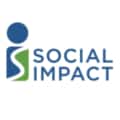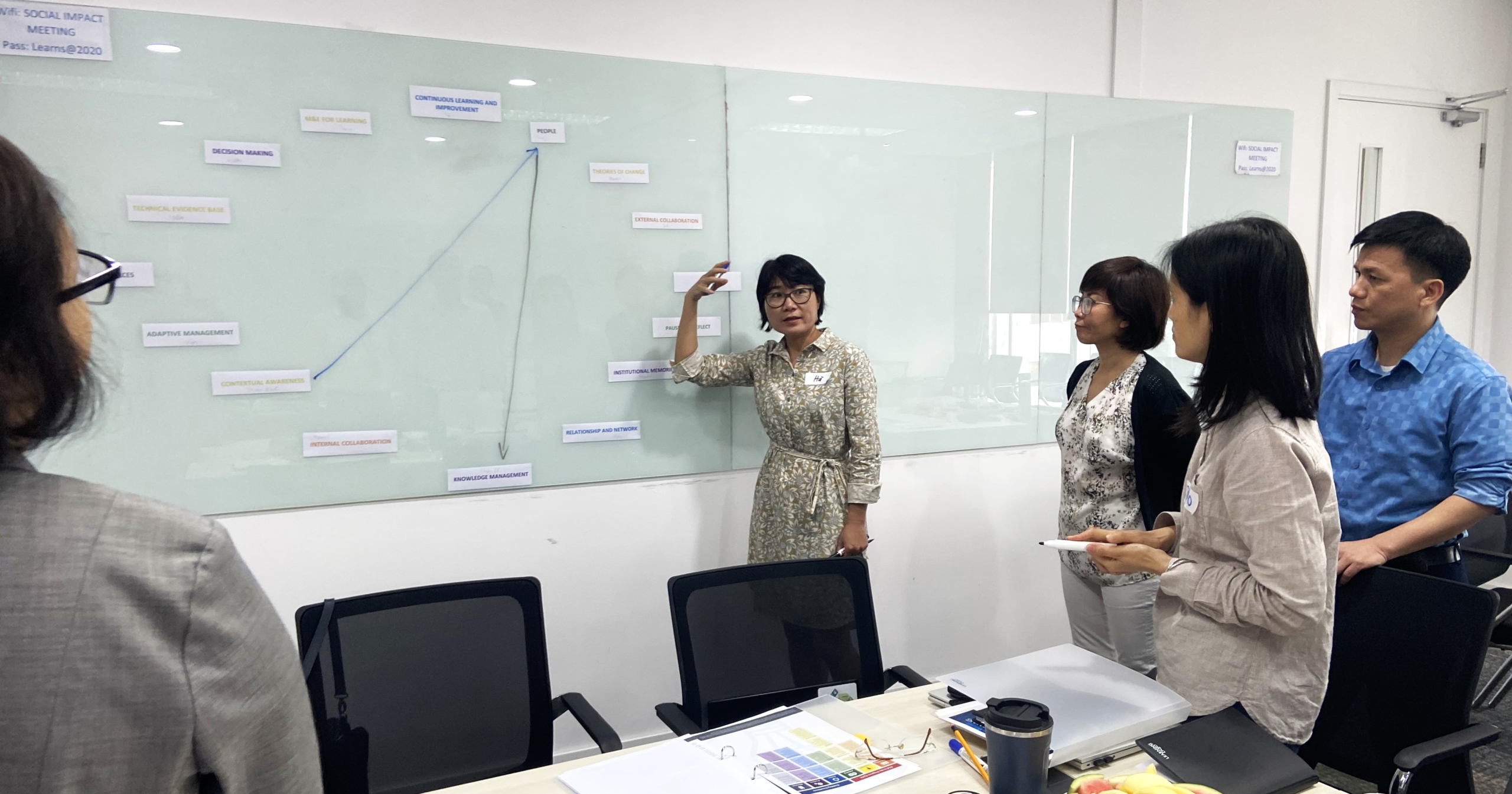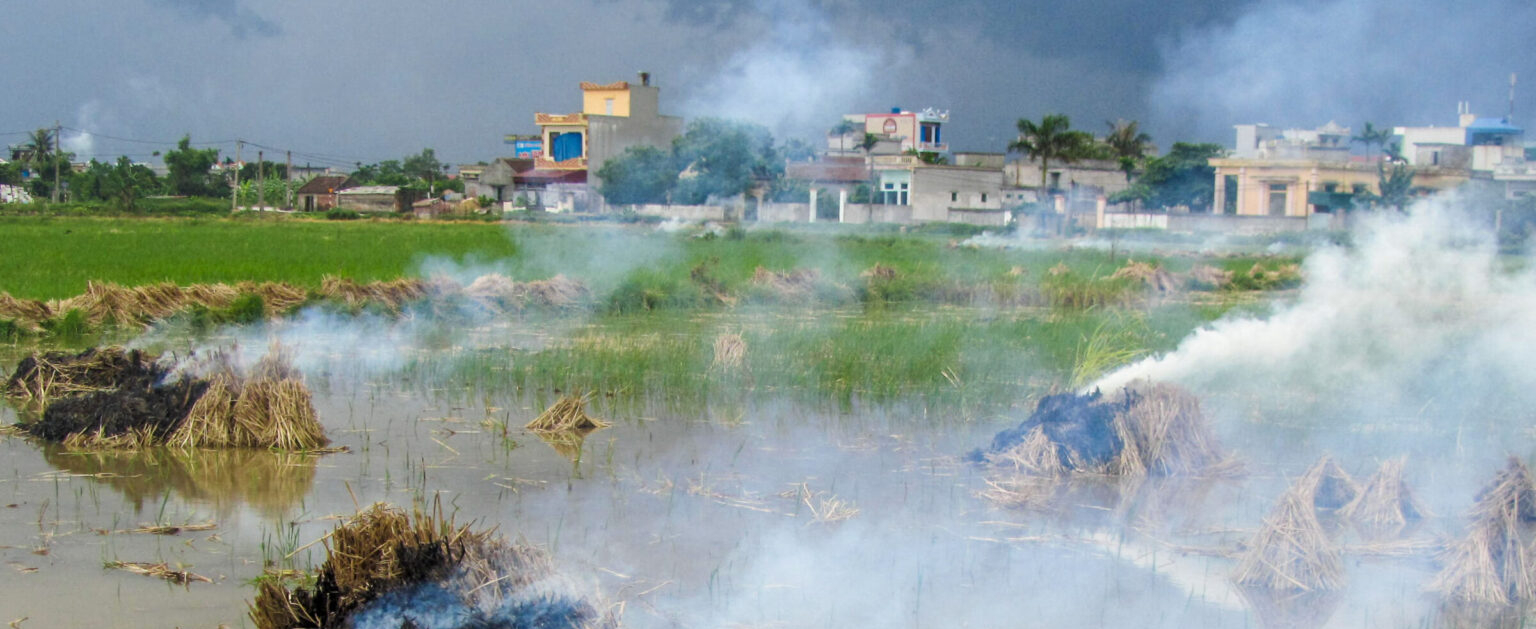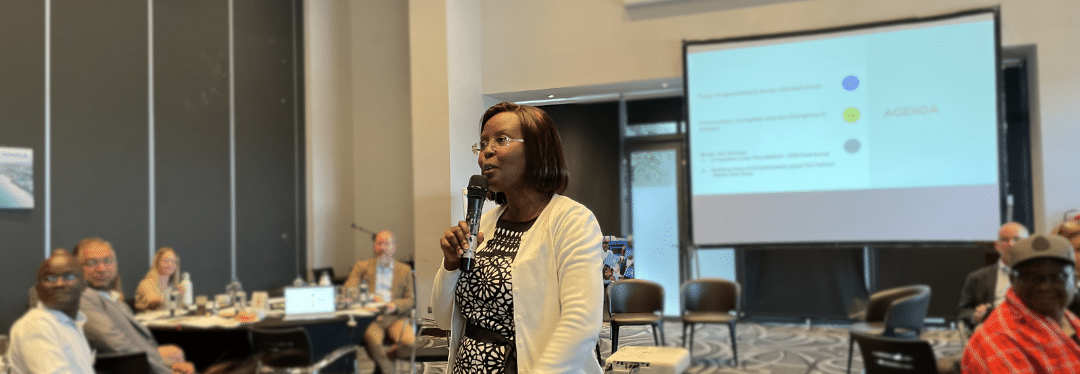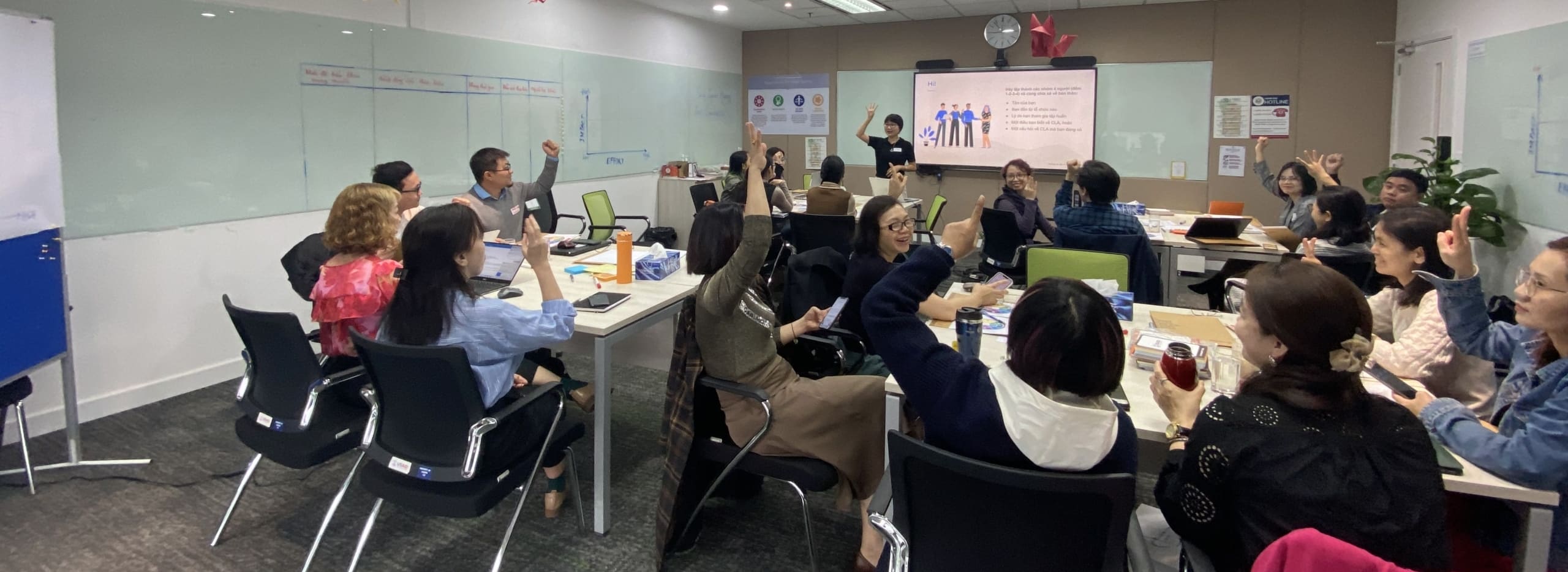Are you interested in assessing your team, organization, or network’s capacities in Collaborating, Learning & Adapting (CLA)? Excelling in these areas is key to organizational resilience in the face of challenges and particularly important for local organizations. But many don’t know where to begin and may be wondering: how do we know if we are doing well when it comes to CLA? How can we determine where we need to improve? Several of the tools shared in this blog can help you figure that out.
But before we dive into the tools, always remember that a tool can only take you so far. If your process isn’t thoughtful, whatever tool you apply won’t be very useful. We have put together some tips for applying an organizational diagnostic tool like those described below here, but the most important are:
- Don’t assess that which you are not willing to address.
- Don’t go it alone.
- Model the change you are ultimately after in how you manage the process
- And, lastly, any assessment is only as useful as the meaning people make of it, so any assessment process needs to be followed by a sensemaking and action planning process.
So let’s dive into the tools, what they are, how they work, and some pros and cons of each. And note: this list is by no means exhaustive.
- CLA Maturity Tool
Of course, a tried and true option is always the CLA Maturity Tool. There is a version for USAID Operating Units and implementing partners (IPs). This tool is a participatory approach to a team or organizational self-assessment. Working in groups, participants can take a sub-component of the CLA Framework and determine to what extent their team is integrating the practices of that sub-component into how they do their work. The goal is not to force consensus but to share how each person sees the situation. In doing so, participants determine the current state of their practice and their desired future state and develop an action plan to bridge the gap between the two.
| USAID’s Collaborating, Learning & Adapting (CLA) Maturity Tool |
| Key Links: USAID Operating Unit version and implementing partner version; Webinar on its use with implementing partners |
Pros:
|
Cons / what to watch out for:
|
- Psychological Safety Survey
According to seminal research by Google’s Aristotle Project, psychological safety – defined as, “an individual’s perception of the consequences of taking an interpersonal risk” – was the most important factor affecting team performance. Essentially, does someone on a team feel like they can ask a question, give feedback, make a mistake, or admit they don’t know? The safer we feel on our team, the more likely we are to learn, experiment, and innovate, leading to more effective and higher performing teams.
| Psychological Safety Survey |
| Key Link: Amy Edmonson’s psychological safety survey |
Pros:
|
Cons / what to watch out for:
|
- Network Pattern Cards
These cards are a conversation starter. They provide examples of how organizations are networked and invite participants to see which pattern most closely matches their way of working (see two examples below).
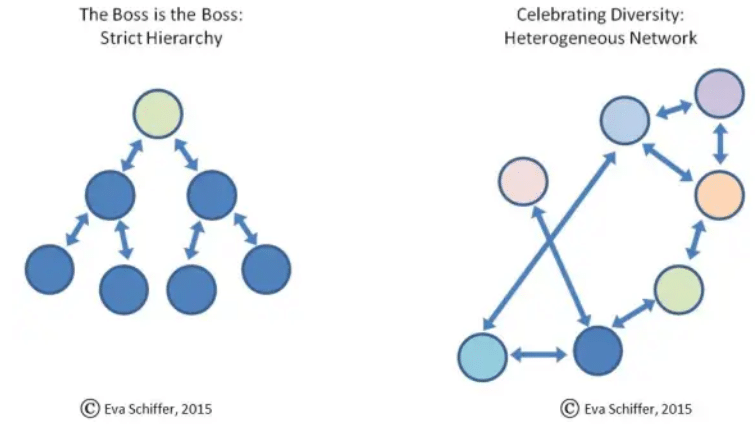
Participants can then reflect on whether this pattern is ideal for their work or if anything should change in how they have organized themselves in order for them to be more effective. This can be a very powerful reflection when considering internal collaboration strengths and challenges.
| Network Pattern Cards |
| Network Pattern CardsKey Link: Eva Schiffer’s Network Pattern Cards |
Pros:
|
Cons / what to watch out for:
|
- Learning Organization Survey:
From a seminal Harvard Business Review article, this comprehensive survey looks at various aspects of learning organizations. It includes three building blocks; the first looks at psychological safety, appreciation of differences, openness to new ideas, and time for reflection. Building block two looks at concrete learning processes and practices, and building block three assesses leadership that reinforces learning. It also has benchmark data to help you compare your organization to others who have taken the survey.
| Harvard Business Review’s Learning Organization Survey | |
| Key Link: Learning Organization Survey | |
Pros:
|
Cons / what to watch out for:
|
- Polarity Mapping
This one is tricky but powerful. Polarities are seemingly opposite ideas that cannot exist without each other. So perhaps your team is struggling with polarities that have a connection to CLA behaviors and practices. For example, decentralization and centralization is a polarity that impacts collaboration and decision-making. Another polarity might be adaptation and stability. Teams may feel they are adapting too much and feel a lack of stability or focus; or they may over rely on stability and fail to adapt when it would make sense. In that example, the questions become: how can we leverage the advantages of both adaptability and stability to be the best version of ourselves? And how can we ensure we avoid the disadvantages of both?
| Polarity Mapping |
| Key Link: Polarity Mapping visual and explanation |
Pros:
|
Cons / what to watch out for:
|
- Appreciative Inquiry
This approach builds on strengths and successes. It asks: what are we doing well that we can continue and expand? It is based on work by David Cooperrider and Suresh Srivastva (1987) out of Case Western University. When applying it to CLA practices, the facilitator can ask: where have we applied CLA approaches that have led to positive outcomes? What have we learned from these experiences? And how can we build on them to further improve our work? I have used this approach on every team I have worked with. It helps us articulate team or organizational values that drive our work and promote strong learning-oriented and collaborative cultures. For more on this approach, see this previous blog.
| Appreciative Inquiry |
| Key Links: David Cooperrider and Associates – What is Appreciative Inquiry? |
|
Pros:
|
Cons / what to watch out for:
|
Consider applying some of these tools as an entry point for organizational change efforts. Which of these tools might help your team identify ways to improve their work and how they work together?
_____
Monalisa Salib leads the USAID Learns team in Vietnam as the Chief of Party. Her 18 years of experience includes long-term, field-based senior management and technical positions in Washington, D.C., Palestine, Yemen, and Vietnam. Monalisa was a co-creator of USAID’s Collaborating, Learning & Adapting (CLA) Framework and Maturity Tool and several other CLA resources on behalf of USAID.

